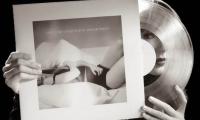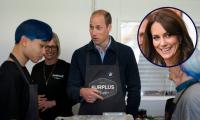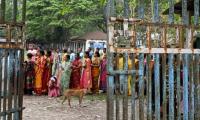A banker by profession, Salim Ansar has a passion for history and historic books. His personal library already boasts a treasure trove of over 7,000 rare and unique books.
Every week, we shall take a leaf from one such book and treat you to a little taste of history.
BOOK NAME: Getting Away with Murder: Benazir Bhutto's Assassination and the Politics of Pakistan
AUTHOR: Heraldo Munoz
PUBLISHER: W. W. Norton & Company - New York
DATE OF PUBLICATION: 2014
The following excerpt has been taken from Pages: 31 — 35
“On December 27, 2007, a suicide bomber killed Benazir Bhutto, the former prime minister of Pakistan. Brilliant and charismatic, the head of a political family as important to Pakistani history as the Gandhis in India or the Kenedys in the United States, Bhutto had recently returned from exile to challenge military dictator Pervez Musharraf in a democratic election. In the aftermath of the assassination, some blamed Musharraf; others blamed terrorists linked to the Pakistani security service, the ISI; still others pointed out the finger at Bhutto's own spouse and entourage; and some speculated that it was a lone wolf attack. Though the individuals behind the conspiracy have never been found, in Getting Away with Murder Heraldo Munoz goes further than anyone else to unravel the mystery of Bhutto's death. Moreover, he explains the unexpected role America played in the tragic events, the byzantine relationship between Pakistan and the United States, and how Bhutto's assignation impacted world politics.
“In a country ruled more often by military dictators than by elected governments, Bhutto offered a secular, democratic hope. Arguably one of Pakistan's most iconic political figures, she became one of the world's female heads of government. Her assassination tore the country apart, destabilizing the entire region. Leading the United Nations' inquiry, Munoz delved into the murky world of Pakistani politics and the infamous Bhutto family; awash in charisma and power, controversy and violence. His year-long investigation frames a story of betrayals corruption, foreign influence, and unsolved political assassinations.
“Munoz provides new insight into Bhutto's unprecedented rise and an unflinching, minute-by-minute narrative of the assassination itself. With impeccable research, Munoz also situates Bhutto in the decades-long history of US-Pakistan relations and the emergence of global terrorism, pinpointing her death as the moment when those relations changed forever.
“The result is a gripping narrative of Pakistan's turbulent political realities and the death of its leading politician.
A MURDER FORETOLD
“What we knew about the day of Benazir Bhutto's assassination before initiating our investigation was confusing and contradictory. There were disagreements about basic facts and much controversy about the assassin or assassins, the cause of death, the former prime minister's entourage, and what the behaviour of the police had been.
“The campaign rally, according to witnesses, was large - in the thousands. Benazir addressed the rally from a stage, a few meters above the crowd, decorated with large portraits of her father, the founder of the PPP, Zulfikar Ali Bhutto. The crowded stage, filled with local parliamentary candidates, national party leaders, and security guards, created an atmosphere of informality and improvisation.
“The political presence was relatively light, although other reports affirmed it was strong. To get in the park, people supposedly passed through metal detectors and were frisked by the police.
“After Benazir concluded her speech, she boarded her bullet-proof vehicle and began to exit the park, surrounded by the Jaan Nisaar Benazir -- the young male volunteers who formed her human shield. As her convoy pulled out of the park, press reports affirmed that she emerged from the vehicle's sunroof to wave to the crowd. Witnesses told a newspaper that "there was a volley of gunfire, followed almost immediately by the thunderous blast of the suicide bomb".
“The New York Times reported that Bhutto had been ‘shot in the neck or head, according to different accounts. ... Seconds later a suicide bomber detonated his bomb’. The news story affirmed that the attack ‘bore hallmarks of the Qaida-linked militants in Pakistan,’ although, it added, ‘witnesses described a sniper firing from a nearby building’. Some media quickly changed the story about Bhutto's cause of death, blaming shrapnel from the explosion.
“A BBC News report quoted Pakistani media that suggested that the police and rangers guarding checkpoints around the exit gate of Liaquat Bagh had left their posts before Benazir's vehicle drove out of the park. The BBC News also cited police sources that ‘confirmed reports Ms. Bhutto had been shot in the neck and chest before the gunman below himself up’. Farooq Naek, a lawyer and senior official of the PPP, gave a slightly different version to Agence France Presse: ‘Two bullets hit her, one in the abdomen and one in the head’.…
“The Telegraph indicated, quoting a leader of the PPP, that ‘two shots hit Ms. Bhutto in the neck and shoulder.’ It further reported that ‘a doctor on the team that attended her said the main cause of death was a bullet that entered the back of her neck and damaged her spinal cord before exiting the side of her head. Another bullet pierced the back of her shoulder and came through her chest’.
“A report by RTT News announced that the perpetrator of the assassination had been identified. It also cited PPP activists who singled out Khalid Shahenshah, one of Benazir's security guards who had subsequently gone underground and who had been caught on TV footage making suspicious signals while standing on the dais next to Bhutto, prior to the exit from the rally where she was murdered. Shahenshah was positioned to Bhutto's left during her speech, and he continually glanced to his left and crouched down several times as if, according to some, to get out of the line of fire, while appearing to run his fingers across his throat-a universal gesture for death. The same RTT report mentioned that Bhutto had hired Shahenshah on the recommendation of security adviser Rehman Malik, minister of the interior at the time of the launching of the UN Commission of Inquiry.
“As will be discussed later, the commission heard numerous conflicting accounts of Benazir's trip to the hospital. At Rawalpindi General Hospital, doctors tried for thirty-five minutes to resuscitate the former prime minister without success. Dr. Abbas Hayat declared to the press that Bhutto had wounds to her head as well as shrapnel injuries. Dr. Muhamad Mussadiq Khan, a top surgeon who attended Bhutto at the hospital, said that she was "clinically dead" on arrival. No autopsy was performed… because the police did not request one. The government replied that Bhutto's husband, Asif Ali Zardari, had waived the autopsy.
“After the attack, the scene of the blast was quickly washed with a high-pressure hose by the local fire company. A day later, Brigadier Javed Cheema of the Interior Ministry gave a press conference where he informed the media that Bhutto had died of a skull fracture caused by a lever attached to the sunroof of her bulletproof vehicle. He further announced that intercepted communications permitted the government to state that Baitullah Mehsud, a tribal leader in north-western Pakistan, had ordered the assassination with support from Al-Qaida's terrorist network.
“The CIA came to the same conclusion according to declarations made by the agency's director, Michael V. Hayden. Some George W. Bush administration officials outside the CIA who dealt with Pakistani matters were less confident, with one, according to the Washington Post, qualifying Hayden's assertion as merely ‘a very good assumption’.
“The controversy surrounding Bhutto's death forced the Musharraf government to agree to a narrow probe by Scotland Yard to ‘support and assist’ the Pakistani authorities in establishing the ‘precise cause’ of Bhutto's death.
“The PPP leaders strongly disagreed with the notion that Benazir had died from an accidental wound caused by hitting her head against the lever of the sunroof of the vehicle. Sherry Rehman, spokeswoman for the Pakistan People's Party, who was with Bhutto in the hospital declared, ‘She died from bullet injury. This was and is our position’. Senator Safdar Abbasi, a medical doctor and long-time friend of Benazir, who was actually in the vehicle with her at the time of the fatal attack reasoned that ‘the way she died-an instant death-suggests very sharp sniper fire, a typical intelligence operation’. His wife, Naheed Khan, who was also a passenger in Bhutto's vehicle on December 27, agreed: ‘There were bullets coming from different directions ... There are lots of high buildings overlooking the area ... This was a typical intelligence operation’.
“The PPP demanded a United Nations investigation of the assassination. In early January 2008, widower and now PPP leader, Asif Ali Zardari, wrote in the Washington Post, ‘I call on the United Nations to commence a thorough investigation on the circumstances, facts and cover-up of my wife's murder, modelled on the investigation into the assassination of former Lebanese Prime Minister Rafiq-al-Hariri’. When Zardari became president of Pakistan on September 6, 2008, the call became not merely a popular notion but an official request from a United Nations member state to the secretary-general of the organization. Five months, Ban ki-moon's office called me in Chile and the investigation began.
salimansar52@gmail.com
https://www.facebook.com/PagesFromHistoryBySalimAnsar
A representational image of an immigrant holding a Canadian flag. — X/@CitImmCanada/FileIslamabad: A delegation of...
A photograph of students appearing for an exam. — AFP/FileRawalpindi:The first annual intermediate examination for...
This image shows the logo of the Ministry of Human Rights. — APP/FileIslamabad: Ministry of Human Right’s Helpline...
Deputy Commissioner Islamabad, Irfan Memon can be seen in this image. — Facebook/Office of the Deputy Commissioner,...
This representational image shows a little plant. — Unsplash/FileRawalpindi: Director General , Parks and...
Students in a school in Islamabad can be seen attending a class on October 12, 2023. — Facebook/Federal Directorate...







